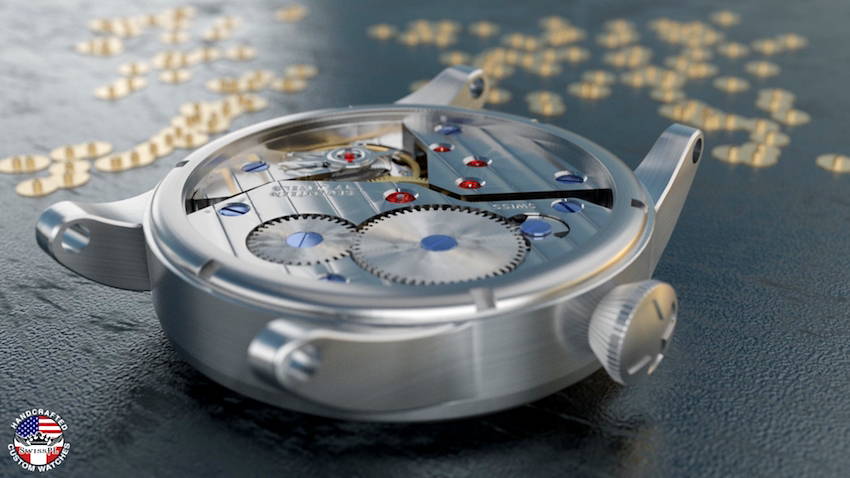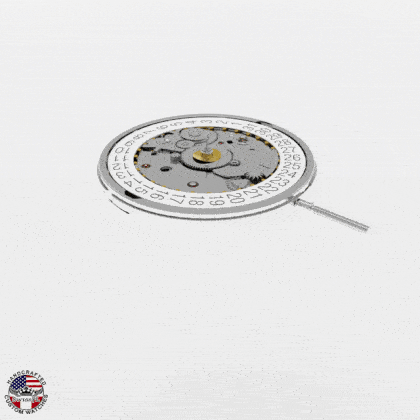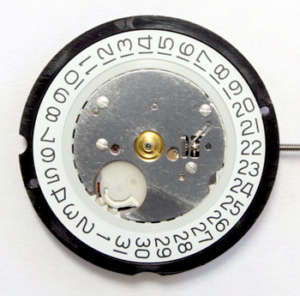Types of Swiss Movements
We understand that personalizing your own Swiss watch can be a daunting task, or at the very least an engaging journey of design and creativity. So that you can focus on the essence of designing your watch, we’ll discuss one aspect which is as integral as the engine of your car; the Swiss movement, the power house for your timepiece, the driving force inside your wristwatch. There are three types of Swiss movements that we offer in our custom watches; the automatic, the hand-wind and the quartz movement. We’re going to focus on them here to help you understand the difference between each.
Mechanical (hand-wind) Movement
This movement is driven by the powerful main spring. but there is no balance weight winding the spring like with the automatic movement. The stored energy of the spring is slowly released while the gears turn and progress the time. This was the first type of watch movement developed in Switzerland before the invention of modern mechanics or robotics; meticulously assembled by skilled watchmakers in an area of Switzerland known as the Watch Valley – outside of Bern, Geneva and Zurich. The mechanical movement was used in luxury timepieces and pocket watches dating back to 1704; one feature of the mechanical movement is they require winding every 36+/- hours to re-tighten the main spring and maintain an accurate time. Many wearers of mechanical watches get in the habit of winding them every day, to maintain a constant tension to the spring and avoid reset the time. But be careful though, DON’T OVERWIND! How can you tell? You’ll feel the spring/winding get tight / tough / sticky; then for heavensake, stop winding! Otherwise the spring will break and that can be costly.


Automatic (self-winding) Movement
This Swiss movement is powered through a collection of precisely crafted gears which are driven by a wound spring, called the Main Spring. The movement is basically the same as a mechanical movement in that it utilizes the power of a wound spring, however the swing is wound automatically. There is a rotor mechanism in the watch, which uses the natural movement of the watch wearer to move the rotor, thereby winding the spring. The other way to wind the spring is by using the crown (called winding the crown). The energy of the spring is slowly released as the gears turn, powering your watch, and sweeping the second hand. Notice there is no ticking motion with the second hand. These mechanical wonders entail an extraordinary amount of craftsmanship and intricate skill to create such accurate timekeeping movements powered merely by the precise interactions of gears and cog wheels, spinning in a synchronized dance of contained chaos. The automatic (mechanical) wrist watch must be wound on average every 42 hours, depending on tension of spring. If the watch has been sitting for more than 42 hours and has stopped, then it need to be wound with the crown and the time / date reset. Some enthusiasts and collectors have more than one mechanical watch and utilize a mechanical multi-watch winder, to avoid having to reset the time one a stopped watch. It should be noted that all mechanical movements can gain, or lose a few minutes a month; this is completely normal, therefore adjust the time periodically.


Quartz (battery powered) Movement
The most reliable and accurate kind of movement is quartz movement, however this is not a mechanical movement. This kind of movement utilizes a battery, which sends an electric charge through a quartz crystal. The crystal oscillates at 32,000 vibrations per second, powering a motor, which accurately moves the hands (within 0.5-2 seconds per day). With these watches, the battery needs to be changed about once every few years. Swiss quartz movements combine some of the gears of a mechanical movement with the power of a quartz movement; therefore they require no winding and very little maintenance (lubrication of the gears), unlike with a mechanical movement.

